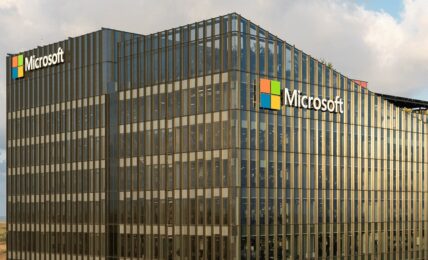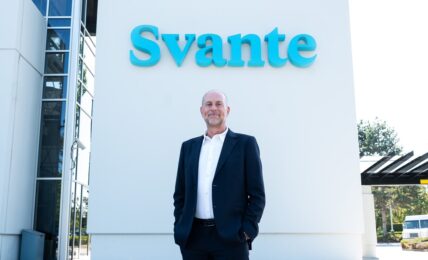By: Sarah Carpenter, Director of Corporate Responsibility, Assent Inc.
The increase in regulatory, investor, and customer attention on environmental, social, and governance (ESG) issues has presented companies with new challenges. Specifically, what is the best way to confront the litany of business challenges that come with managing ESG risks and opportunities in the supply chain?
Many businesses will find themselves presented with two options. The first is to build an internal solution. For those who are ESG trail blazers with significant resources available for testing and piloting original solutions, this option can be attractive.
However, those who are looking to align their approach with industry standard practice may find that an internal solution is a poor use of resources. Specifically, internal solutions can heavily burden internal teams and budgets, taking away from impact-oriented actions and deliverables. Buying a platform may be a more tenable solution for these companies as it allows them to prioritize strategic ESG efforts for growth.
Both options come with their benefits and their drawbacks. What’s right for you will depend on your ESG goals and how you envision your company’s future.
The Difference Between Building and Buying
In this context, building a solution simply refers to any internal effort, including piecemeal outsourced solutions or internally-built platforms or spreadsheets, that leaves manufacturers solely responsible for their program’s creation, maintenance, and effectiveness.
Alternatively, buying a solution refers to the purchase of a dedicated compliance, ESG, and/or sustainability supply chain solution that is contracted to support and enable the success of a manufacturer’s program.
What A Solution Should Entail
ESG supply chain programs involve a variety of moving parts and these parts are distinct from those needed to cover the risks within manufacturers’ four walls. Any supply chain solution – whether built internally or bought – should give deep visibility into risks and turn insights into action to improve ESG performance. This involves:
Liaising with suppliers from around the world in a way that fosters allyship and strengthens supply chain relationships
Managing supply chain data – including both collection and validation – across a multitude of parts and suppliers for all critical ESG topics, including regulatory topics like the Uyghur Forced Labor Prevention Act (UFLPA), to unlock insights
Delivering tangible tasks and recommendations aligned to each suppliers’ unique profile to guide them through their ESG journey
Translating insights and actions into sustainability disclosures using industry reporting standards, like the Global Reporting Initiative (GRI), to foster and retain the support of your company’s stakeholders
The outline above scratches the surface, but it gives a good glimpse into both the variety of tasks that need to be accomplished and the depth of the work each task requires.
Building an Internal Solution
With sustainability quickly becoming a top KPI for supply chain management, along with increasing interest in ESG, there are several market access, public perception, financial risks, and opportunities for organizations to navigate.
However, everyone’s risk and opportunity is not the same. For instance, companies and manufacturers that are trail blazers in the ESG space and have immense capital may be able to carve out their own unique approach.
Still, building an internal solution presents unique challenges. As mentioned before, building solutions taxes internal resources. After all, your solution needs to continuously evolve to keep up with changing ESG regulations, global circumstances, and best practices.
Moreover, building an internal solution can result in significant startup IT investments that will need to be supported by people with the expertise required to define your organization’s ESG data requirements as well as its strategy for capturing, analyzing, actioning, and reporting the data.
What about your ability to drive change? While some companies may be comfortable with speaking as one voice to their suppliers, others may find that internal solutions don’t enable the kind of leverage that companies gain when they use the same platform as other businesses in their industry and – with it – share supplier results and opportunities to work collectively toward improvements.
Those companies may find buying a solution the more attractive and strategic option.
Buying a Solution
Buying a solution offers companies access to a platform that is built and maintained by a team of professionals with diverse backgrounds in ESG. These platforms often include turnkey support and access to subject matter expertise so you can align your programs with industry standard practice and prepare for changes before they arrive. With a turnkey solution, you get the reliable insights you need to make confident business decisions, a consistent view into evolving ESG regulations, and the supplier engagement approach required to turn your suppliers into ESG allies.
This is part of the reason why buying a solution is an attractive and beneficial option for companies who don’t have tons of capital to spend on testing and piloting company-specific solutions. Plus, as companies evolve their ESG programs to meet a growing number of reporting requirements, an external solution is purpose-built to transpose insights and actions into disclosures aligned with ESG reporting frameworks.
Of course, the question companies face when buying a solution is cost. More specifically, what return on investment can you expect? External solutions aren’t free, so the benefits they present to manufacturers must be substantial for the resource spend. That’s why it’s important to inspect a platform’s estimated ROI before putting money down, so you can get a better understanding of the platform’s benefit.
The Right Choice
Every manufacturer and organization is different. Deciding whether to buy or build a solution is predicated on a number of factors, from growth goals, to internal infrastructure, to available resources, and beyond.
The focus on ESG issues, and on how manufacturers respond to them, is widespread and diverse. Demand for greater action on ESG topics comes from many stakeholders, including consumers, suppliers, regulators, and investors. It is vital to proactively prepare. Doing so – whether in the form of building internally or buying externally – will continue your sustainability journey with the right foot forward.
About the author:
Sarah Carpenter, Director of Corporate Responsibility at Assent Inc. provides direction to Fortune 500 companies on human rights due diligence and ESG strategies with a focus on supply chain impacts. She also leads Assent’s B-Corp Certified corporate sustainability program. Following the 2013 Rana Plaza collapse in Bangladesh, she supported the United Nations International Labour Organization’s work promoting labor rights reform in the garment industry.
Sarah has worked for a range of rights-based non-governmental organizations (NGOs), including Plan International and the Canadian Network on Corporate Accountability. She is the current chair of the Slavery and Trafficking Risk Template Working Group of the Social Responsibility Alliance.
The post Guest Post: Should You Build or Buy an ESG Supply Chain Solution? appeared first on ESG Today.



